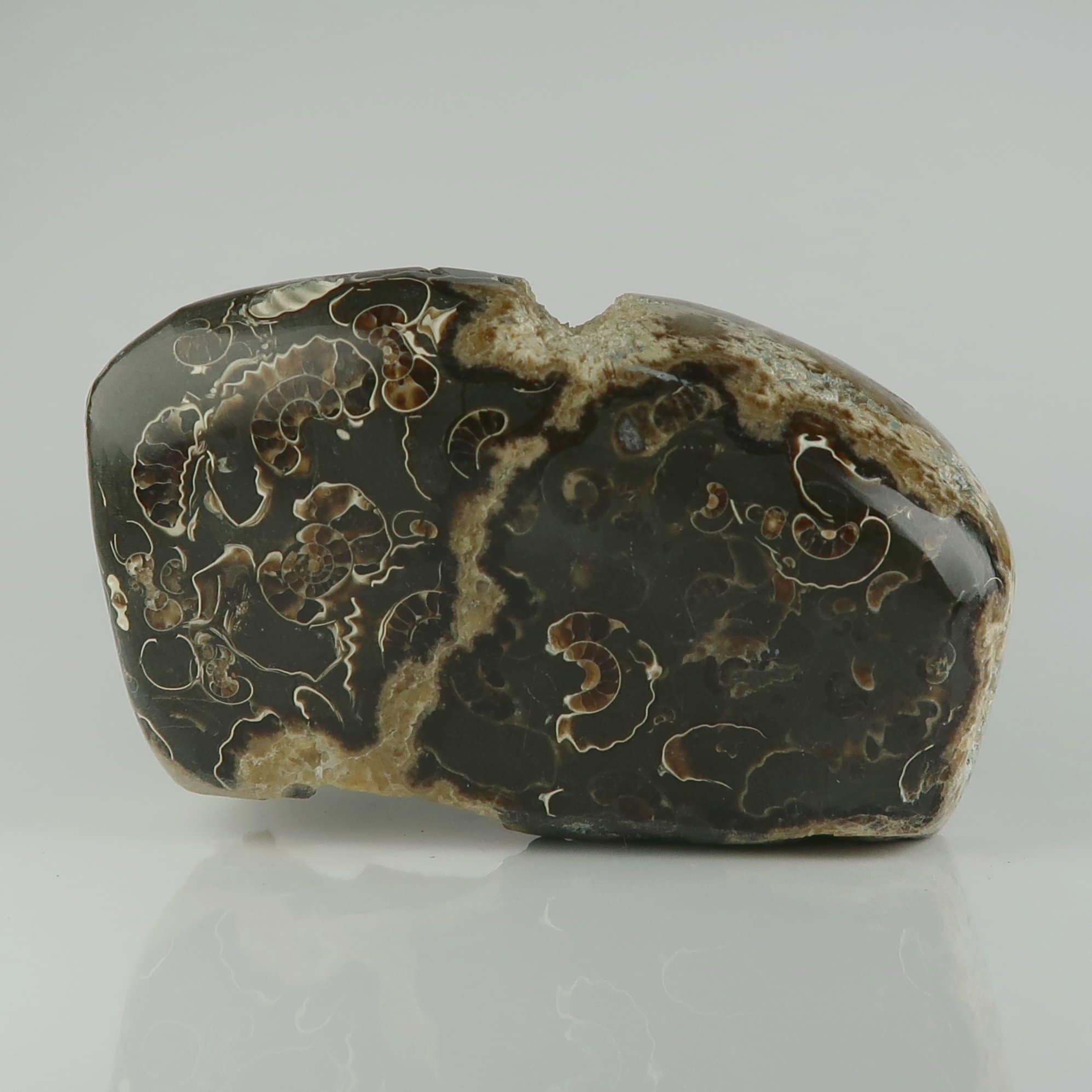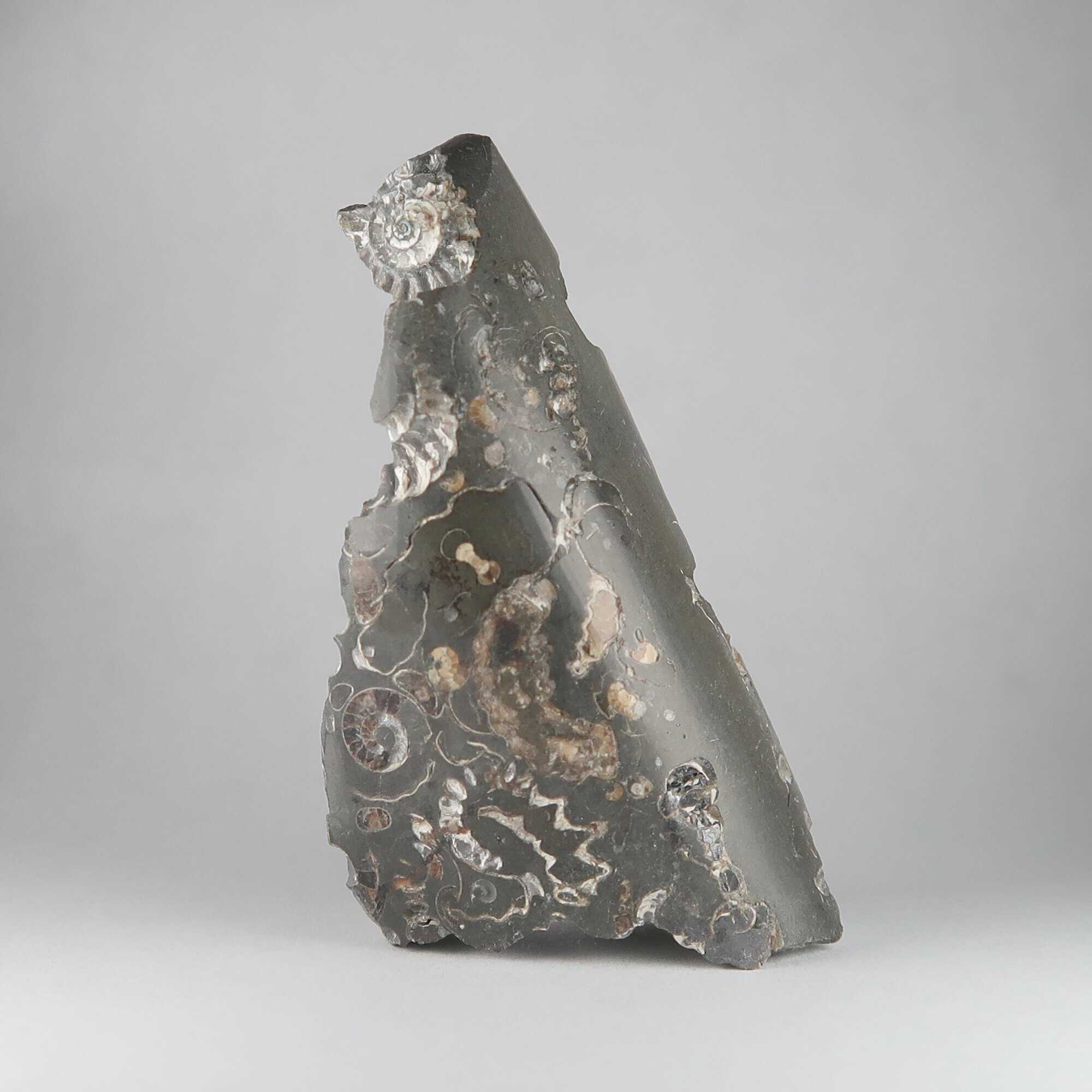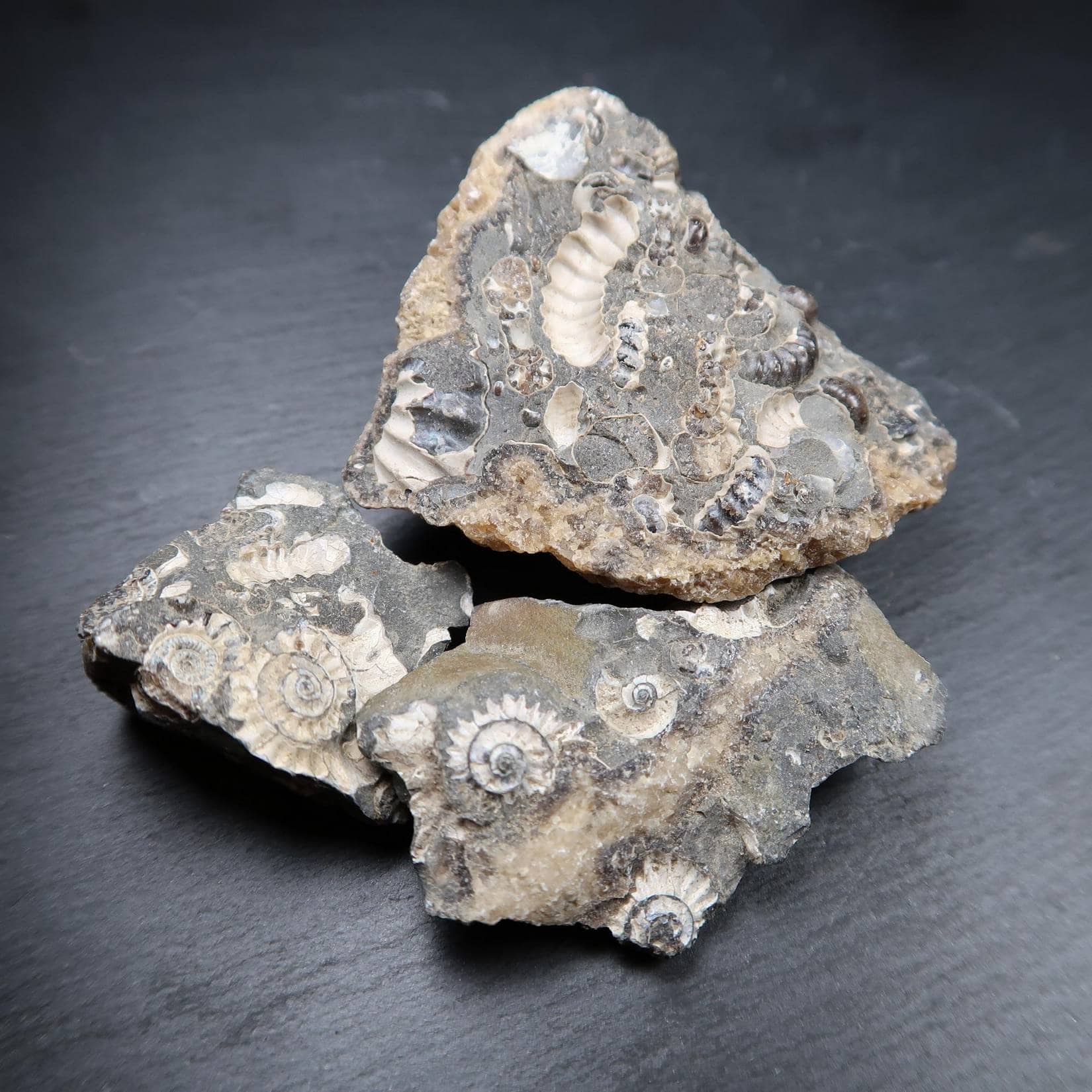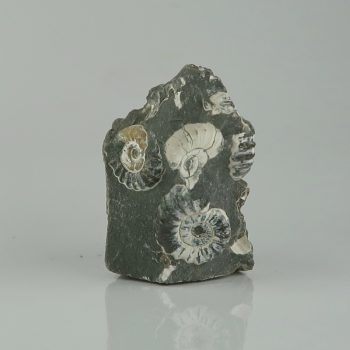Marston Marble
Marston Marble is the name given to a fossiliferous mudstone from Marston Magna, Somerset, UK.
It is not a marble; this is a trade name only. Geologically it is a mudstone, often with Calcite sections.
This material is very popular due to the contrast between the Ammonites and the matrix – especially with lapidaries who cut and polish the material, often for jewellery.
Showing the single result
Appearance, Uses and History
Marston Marble is a gorgeous contrasting material consisting of white fossilised Ammonites in a darker Mudstone and Calcite matrix. It is not mineralogically a Marble – this is purely a trade name.
It is found in a single location, the small village of Marston Magna, near Yeovil in Somerset.
The identity of the locale for this material was a mystery for many years, which has led to a considerable boost in popularity for the material – the majority of which is from older collections as it is typically quite deep.
Believe it or not, it was used to make grave markers and headstones in local churchyards around Marston Magna.
The material itself is Jurassic in origin, around 200 million years old, and typically contains Ammonites including Promicroceras marstonense and Asteroceras Blakei.
Photos of Marston Marble



Hazards and Warnings
Almost all rocks, minerals (and, frankly, almost all other substances on earth) can produce toxic dust when cutting, which can cause serious respiratory conditions including silicosis.
When cutting or polishing rocks, minerals, shells, etc, all work should be done wet to minimise the dust, and a suitable respirator or extraction system should be used.

